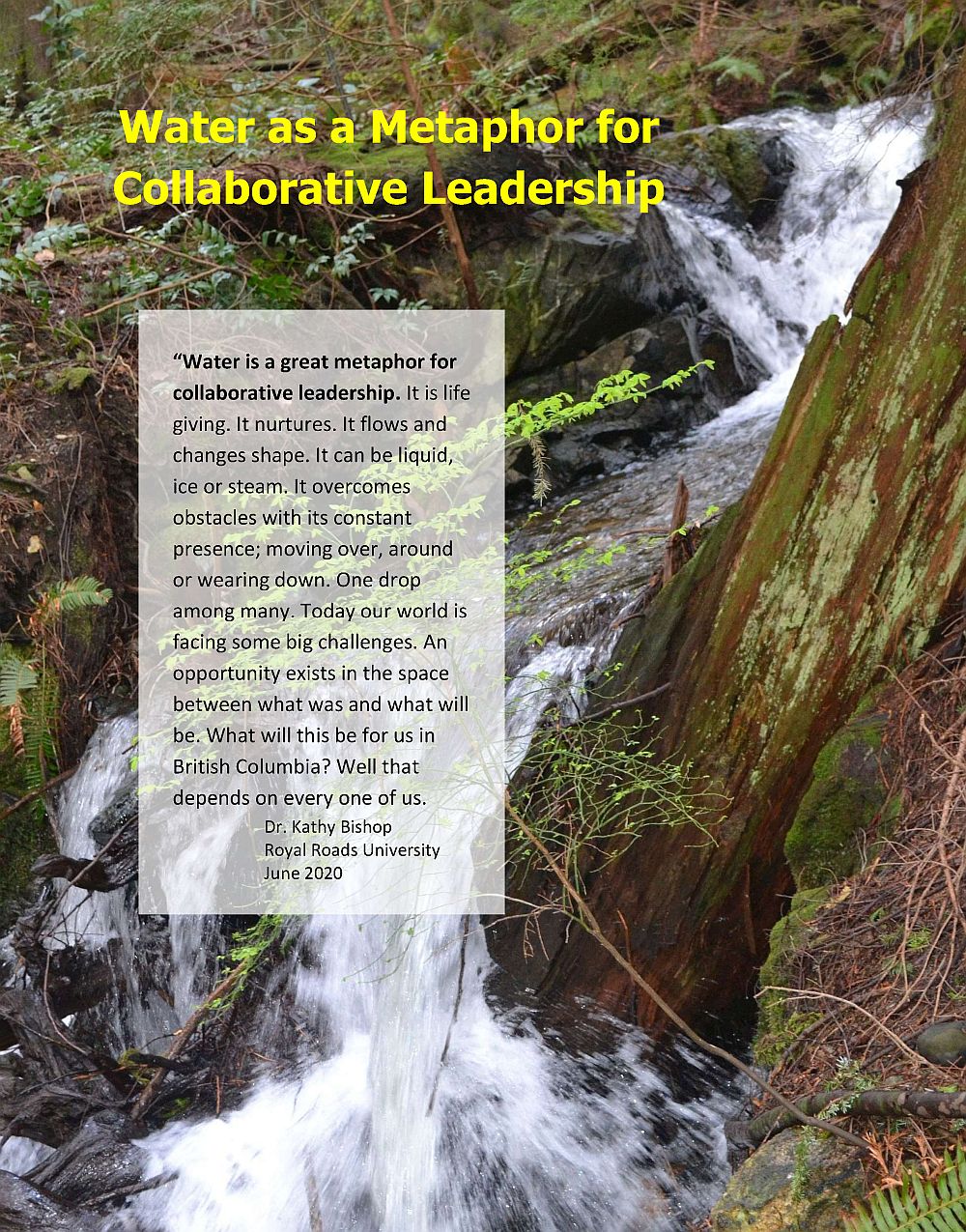ADAPTING ASSET MANAGEMENT TO CLIMATE REALITIES: “Climate change impacts are risks which can be addressed by aligning asset lifecycles to performance or change thresholds which consider how levels-of-service are likely to deteriorate in response to climate changes impacts,” stated Robert Hicks, Senior Policy and Process Engineer, City of Vancouver
NOTE TO READER:
“SHARE INFORMATION. INFORM DECISIONS.” This soundbite lines up nicely with the mission of Waterbucket eNews which is to help our readers make sense of a complicated world. Waterbucket eNews celebrates the leadership of individuals and organizations who are guided by the vision for Living Water Smart in British Columbia to build greener communities and adapt to a changing climate; and embrace “design with nature” approaches to reconnect people, land, fish, and water in altered landscapes.
The edition of Waterbucket eNews published on November 2, 2021 introduced the idea that asset management lifecycles must be considered and re-aligned with the new climate reality of longer and drier summers and warmer, wetter winters.
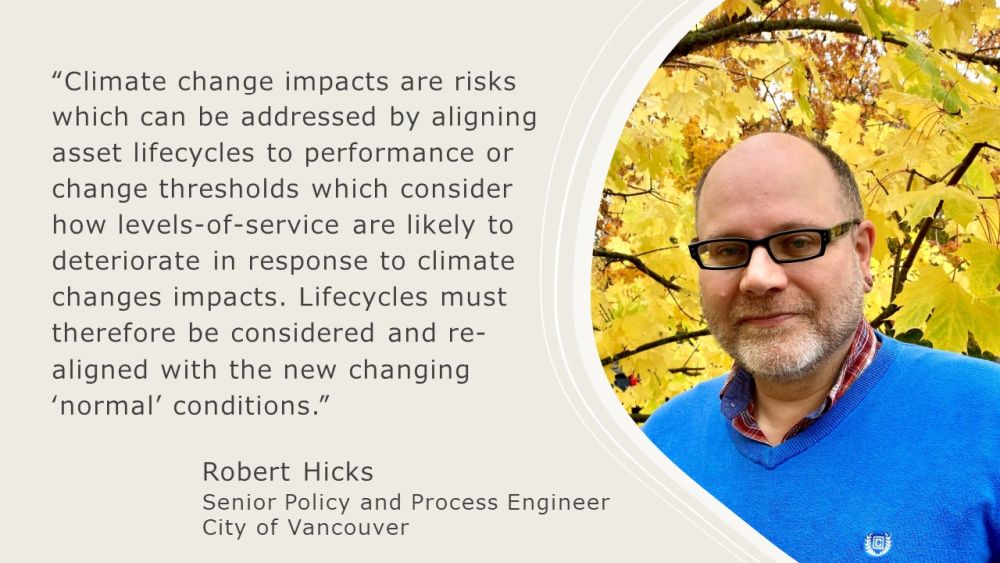
EDITOR’S PERSPECTIVE
on adapting asset management to climate realities
“Robert Hicks was part of the team that conceived the partnership and collaboration framework for the Water Sustainability Action Plan for BC. For all the talk over a long period of time about climate change and what it means, Robert Hicks and I have observed that many local government practitioners still lack a full understanding of some foundational concepts and how to translate such concepts into resilient solutions and actions that would benefit their communities,” stated Kim Stephens, Waterbucket eNews Editor and Executive Director, Partnership for Water Sustainability in British Columbia.
“Too often, we have observed, there is a tendency to add layers of complexity and lose sight of the nature of a problem as well as the obvious solution. This was the context for co-authoring an article for Asset Management BC. We had two outcomes in minds. First, introduce their readership to a foundational concept, namely Water OUT=Water IN. And secondly, open minds to spark conversations within local governments about what this deceptively simple equation means from the operational perspective.”

“Climate change has aggravated an existing vulnerability related to seasonal supply of water in BC. Over time, the safety factor has been shrinking. When the water resource is large and water demand is small, variability is not that noticeable. But when the demand (Water OUT) is large relative to the available resource, a variation on the supply side (Water IN) magnifies the perception of impact. In many cases, BC communities have long been operating on narrow margins.”
“A generation ago, water supply managers could reasonably anticipate that three months of water storage would be sufficient to maintain supply during a dry summer. Today, however, a 6-month drought is a very real likelihood, and on a repeating basis. In the meantime, populations have also grown in the major centres. Winters are warmer and wetter. Summers are longer and drier. This new reality has huge consequences for water security, sustainability, and resiliency.”
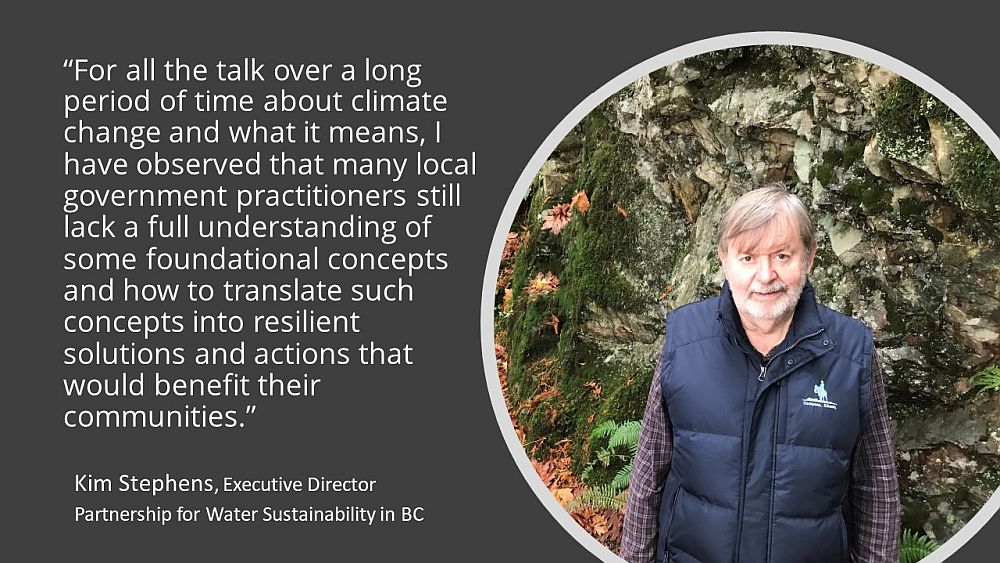
Adapting Asset Management to Climate Realities
“A constant challenge for planning is not to prevent past events, but instead is to use past experiences to inform and create flexible strategies for the present and the future. Furthermore, this need for flexibility is not restricted to the immediate scope of the problem at hand; but must also consider the broader juggling of evolving local government priorities and service demands,” continued Kim Stephens.
“This leads to the challenge of assessing problems with sufficient complexity to arrive at flexible and resilient solutions, while at the same time not being overwhelmed and paralyzed by over-analysis.”
“When the climate is changing, an over-arching goal for sustainable water supply and demand management would be to build in resiliency that addresses risk. There is no silver bullet. Communities need to do many little things. Over time the cumulative benefits of doing many things do add up. This is the essence of the whole-system approach.”
To Learn More:
Read an article titled Restore the Balance in Water Balance – Climate Change is Another Variable When Planning for Sustainable Service Delivery, Dealing With Uncertainty, and Managing Risk, published in the Summer 2021 issue of the Asset Management BC Newsletter.

Adjusting to Longer and Drier Summers in BC
“A whole-system way of thinking and doing is an ongoing theme for Waterbucket eNews and the Living Water Smart Series. Thus, the key message in the Asset Management BC article is that climate change is not a driver for changing standards of practice related to water supply and demand management; rather, it is another variable,” explained Kim Stephens.
“Context is everything. 2003 was the first in a series of “teachable years” that have highlighted community vulnerability. When every possible natural disaster happened and Kelowna was burning, climate change finally caught the attention of the public. This set in motion a series of provincial initiatives and outcomes that have rippled through time. One of these “big ideas” is the Water OUT = Water IN way of conceptualizing risk and uncertainty in a changing climate.”
“Ensuring a safe and adequate water supply depends on understanding the science behind the Water OUT = Water IN equation, as well as what this means at the operational level. Given the variability of the factors behind the equation, this relationship always will represent a snapshot in time as its’ inputs shift, evolve and change over time.”
“The article in the Asset Management BC newsletter postulates that climate change impacts are risks which can be addressed by aligning asset lifecycles to performance or change thresholds which consider how levels-of-service are likely to deteriorate in response to climate changes impacts. Lifecycles must therefore be considered and re-aligned with the new changing ;normal’ conditions.”
“Simply put, the article introduced another way to consider variance and uncertainty in a changing climate.”
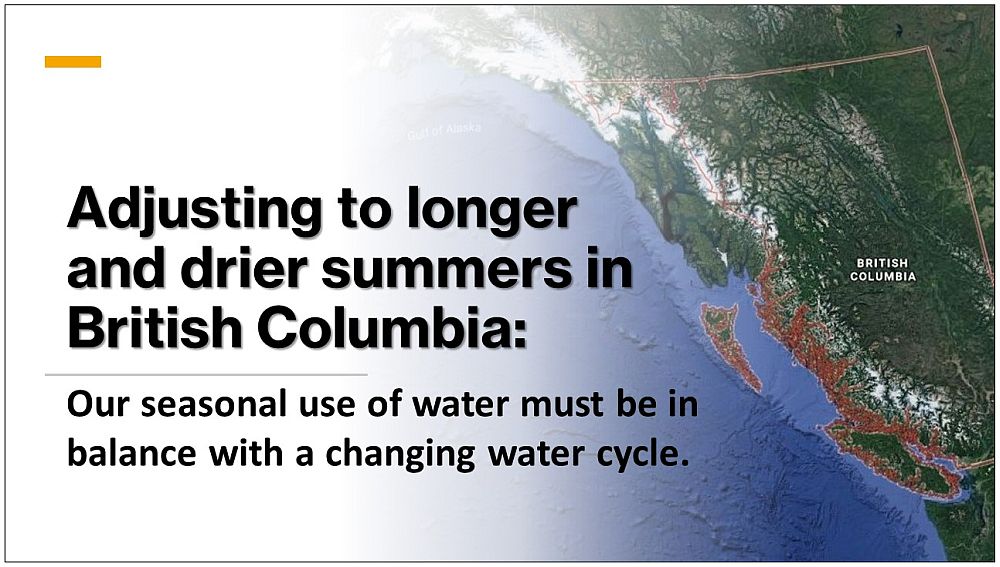
Climate Change Impacts are not Optional
“If we look at the variability in climate change impact scenarios that may occur within many asset lifecycles, we may get distracted by the uncertainty and statistical variance of the magnitude among the anticipated changes for key parameters that inform levels-of-service,” stated Robert Hicks. Senior Policy and Process Engineer, City of Vancouver.
“Another way to consider this variance and uncertainty is to not look at the variation of key parameters for a given future year, but rather consider the time-range that a key performance threshold might be reached. For example, climate models could indicate a change in a water supply in 2050 decreasing by 15% to 25% depending upon underlying assumptions.”
“Framing climate change impacts this way does not clearly align the changes to asset performance. But what if the scenarios are reframed with the uncertainty being the timeframe that a threshold is reached and not the uncertainty of change for a future date?”
“Then asset performance can be better assessed. For example, what if the data now said the water supply will decrease by 25% as early as 2050 and as late as 2080? This reframes reaching the threshold as unavoidable and results in a window of impacts which can be considered as part of an asset’s lifecycle and risk.”
“For asset management, the consideration is how and when assets might be compromised in their lifecycle by climate change and certainly that new assets need to consider what climate change impacts will affect their lifecycle and levels-of-service.”
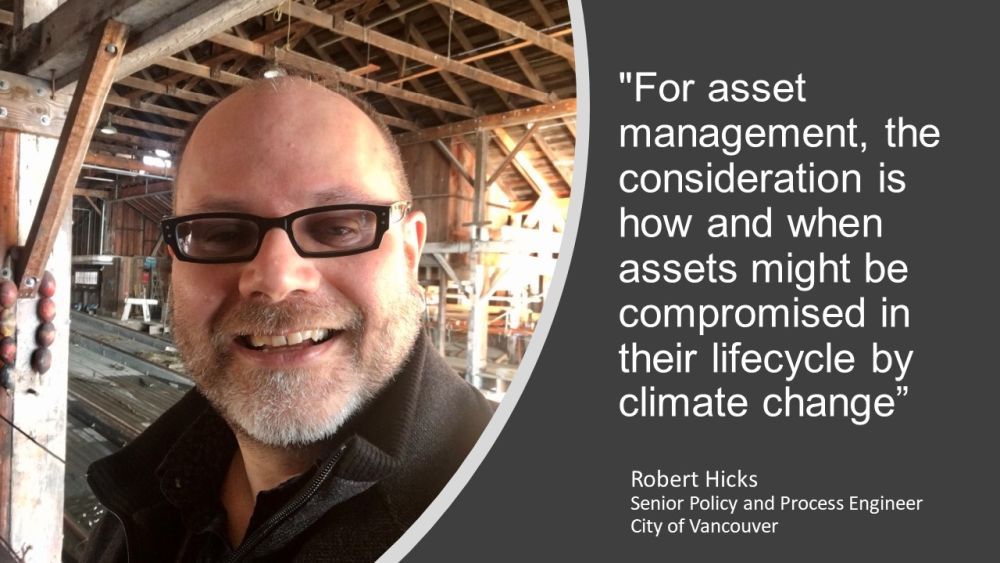
About the Partnership for Water Sustainability in BC
Incorporation of the Partnership for Water Sustainability in British Columbia as a not-for-profit society on November 19, 2010 was a milestone moment. Incorporation signified a bold leap forward. The Partnership evolved from a technical committee in the 1990s, to a “water roundtable” in the first decade of the 2000s, and then to a legal entity. The Partnership has its roots in government – local, provincial, federal.
The umbrella for Partnership initiatives and programs is the Water Sustainability Action Plan for British Columbia. In turn, the Action Plan is nested within Living Water Smart, British Columbia’s Water Plan. Released in 2008, Living Water Smart was the provincial government’s call to action, and to this day transcends governments.
Conceptual Framework for Inter-Generational Collaboration
Technical knowledge alone is not enough to resolve water challenges facing BC. Making things happen in the real world requires an appreciation and understanding of human behaviour, combined with a knowledge of how decisions are made. It takes a career to figure this out.
The Partnership has a primary goal, to build bridges of understanding and pass the baton from the past to the present and future. To achieve the goal, the Partnership is growing a network in the local government setting. This network embraces collaborative leadership and inter-generational collaboration.
Application of Experience, Knowledge and Wisdom
The Partnership believes that when each generation is receptive to accepting the inter-generational baton and embracing the wisdom that goes with it, the decisions of successive generations will benefit from and build upon the experience of those who went before them.
The Partnership leadership team brings experience, knowledge, and wisdom – a forceful combination to help collaborators reach their vision, mission, and goals for achieving water sustainability. When they are successful, the Partnership is successful.
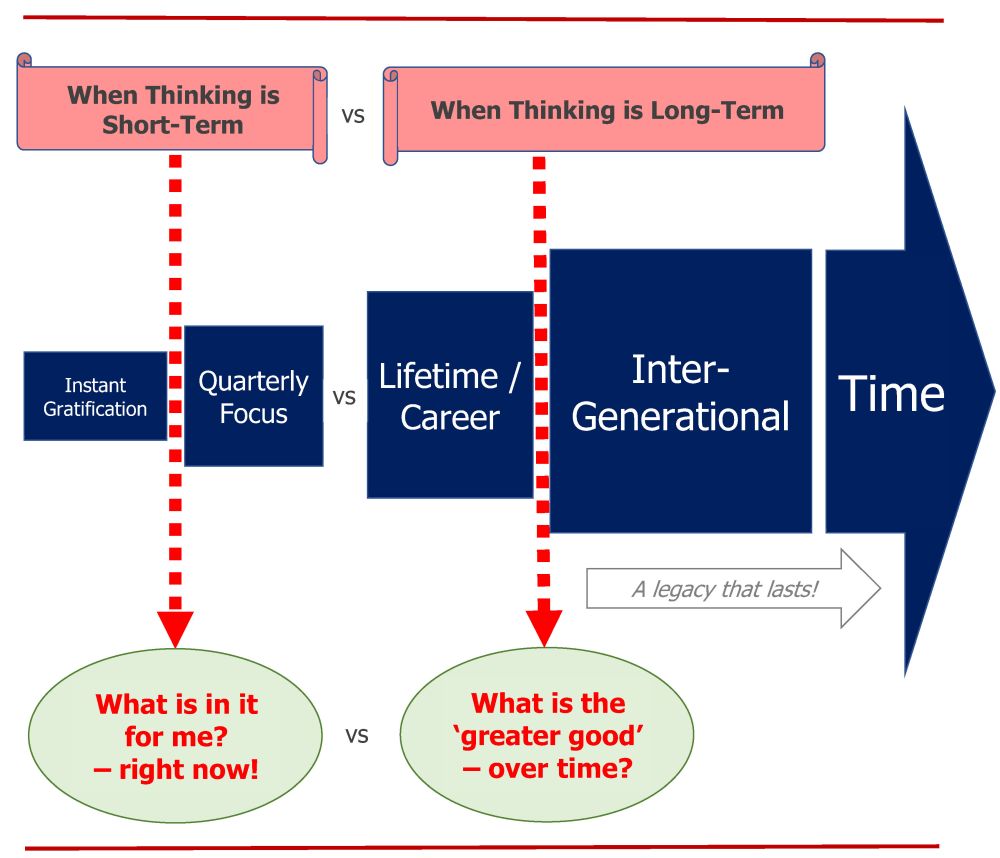
The Time Continuum graphic (above) conceptualizes the way of thinking that underpins the inter-generational mission of the Partnership for Water Sustainability. Influence choices. Capitalize on the REACHABLE and TEACHABLE MOMENTS to influence choices.
TO LEARN MORE, VISIT: https://waterbucket.ca/about-us/
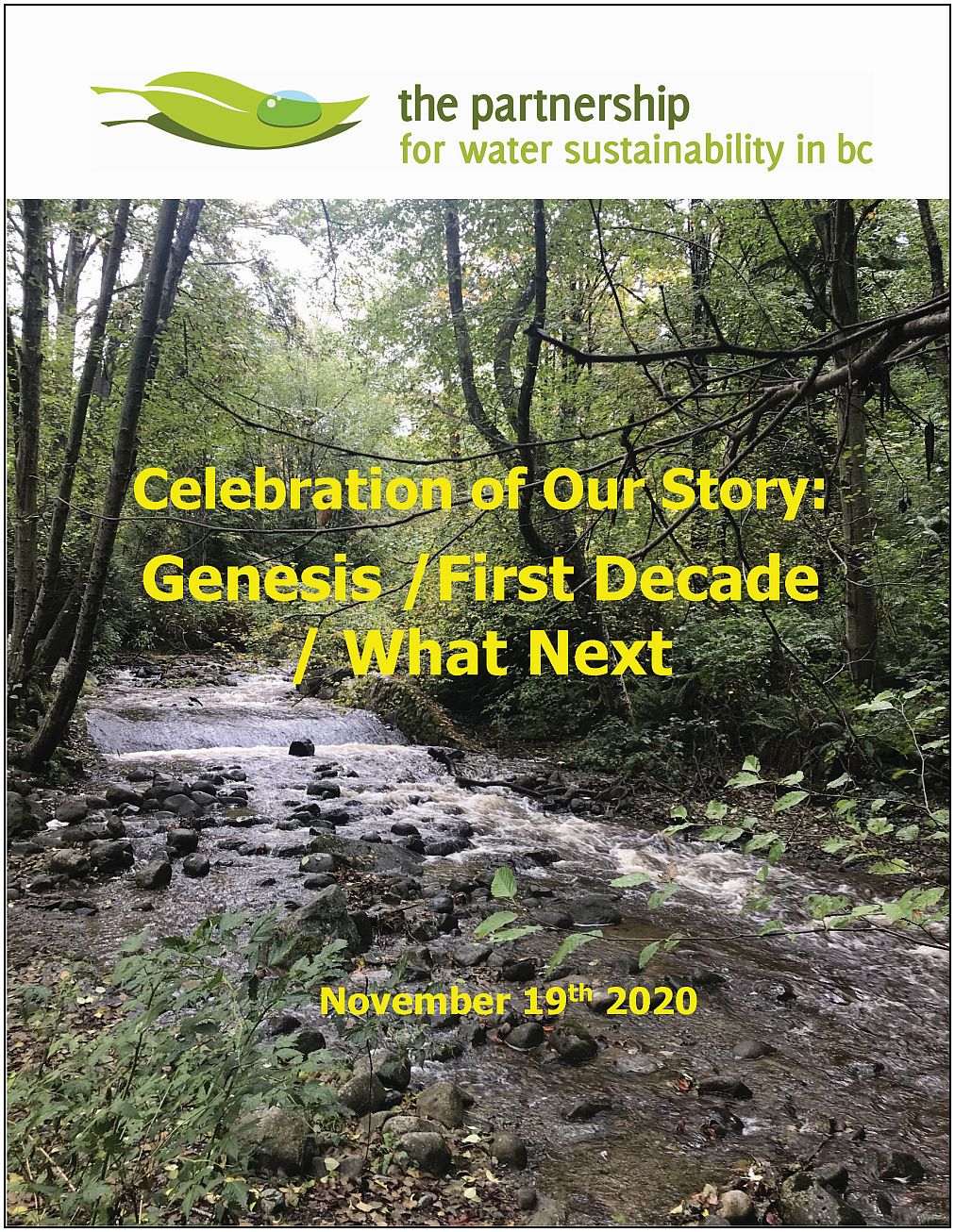
DOWNLOAD: https://waterbucket.ca/atp/wp-content/uploads/sites/9/2020/11/PWSBC_Story-of-First-Decade_Nov-2020.pdf


